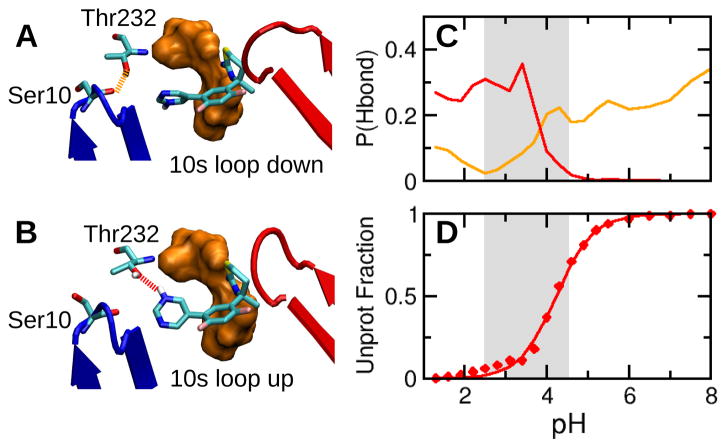Figure 4.
Inhibitor 2 competes with the 10s loop for the interaction with Thr232. A. Binding mode of 2 at high pH. The 10s loop and flap are shown in blue and red, respectively. Ser10 forms a hydrogen bond with Thr232, and the 10s loop is down. B. Binding mode of 2 at low pH. A hydrogen bond is formed between Thr232 and the pyrimidine nitrogen of 2, and the 10s loop is up. C. pH-dependent hydrogen bond occupancy. The hydrogen bond between Thr232 (hydroxyl) and Ser10 (backbone carbonyl) is shown in orange, while that between Thr232 (hydroxyl) and the pyrimidine nitrogen of 2 is shown in red. D. Unprotonated fraction of the pyrimidine nitrogen of 2 at different pH. The solid curve is the best fit to the Hill equation.

